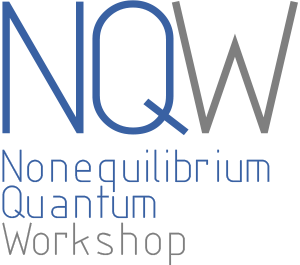
- This event has passed.
Quantum Domain Melting of a Wigner Crystal in a Quantum Annealer
December 14, 2021 @ 17:20 - 17:45 CET
J. Vodeb,1,2 M. Diego,1 Y. Vaskivskyi,1 L. Logaric,1 Y. Gerasimenko,1 V. Kabanov,1 B. Lipovsek,3 M. Topic,3 D. Mihailovic1,2,4
1Department of Complex Matter, Jozef Stefan Institute, Jamova 39, SI-1000 Ljubljana, Slovenia
2Department of Physics, Faculty for Mathematics and Physics, Jadranska 19, University of Ljubljana, SI-1000 Ljubljana, Slovenia
3Faculty for Electrical Engineering, University of Ljubljana, 1000 Ljubljana, Slovenia
4CENN Nanocenter, Jamova 39, 1000 Ljubljana, Slovenia
The ordering of systems emerging through non-equilibrium symmetry breaking transitions is inevitably accompanied by domain formation. The underlying microscopic physics that defines the system‘s energy landscape for tunneling between domain configurations is of interest in many different areas of physics, ranging from cosmology to solid state quantum matter [1-8]. Domains may reconfigure by thermally-driven microscopic processes [9,10], or – in quantum systems – by macroscopic quantum tunneling. Here, we report quantum domain melting dynamics in two embodiments: an electronic crystal 1T-TaS2, and its matching simulation on a quantum computer [11]. We use scanning tunneling microscopy to measure the time-evolution of electronic domain reconfiguration dynamics in real time, and compare this with the time evolution of domains in an ensemble of entangled correlated electrons in simulated quantum domain melting. The domain reconfiguration is found to proceed by tunneling between minima in a self-configuring energy landscape. A quantum charged lattice gas model is set up in a quantum annealer, that closely matches the experiment. Both are seen to exhibit characteristic ragged time evolution and temperature-dependence observed macroscopically averaged over the ensemble. Understanding the quantum processes involved in electronic domain melting opens the way to understanging non-equilibrium interacting many-body quantum systems at the microscopic level.
- M. S. Turner and F. Wilczek, “Is our vacuum metastable?” (1982)
- B. M. Roberts et al., Nature Communications 8, 1 (2017)
- S. Coleman, Physical Review D 15, 2929 (1977)
- S. Kustov et al., Physical Review Letters 124, 016801 (2020)
- L. Thomas et al., Nature 383, 145–147 (1996)
- E. M. Chudnovsky and J. Tejada, Cambridge University Press (1998)
- A. Kandala et al., Nature 549, 242 (2017)
- D. D. Awschalom et al., Physical Review Letters 68, 3092 (1992)
- L. P. Pitaevskii and E. M. Lifshitz, Physical Kinetics: Volume 10 (2012)
- A. Baldan, Journal of Materials Science 37, 2171 (2002)
- A. D. King et al., Nature Communications 12, 1 (2021)


